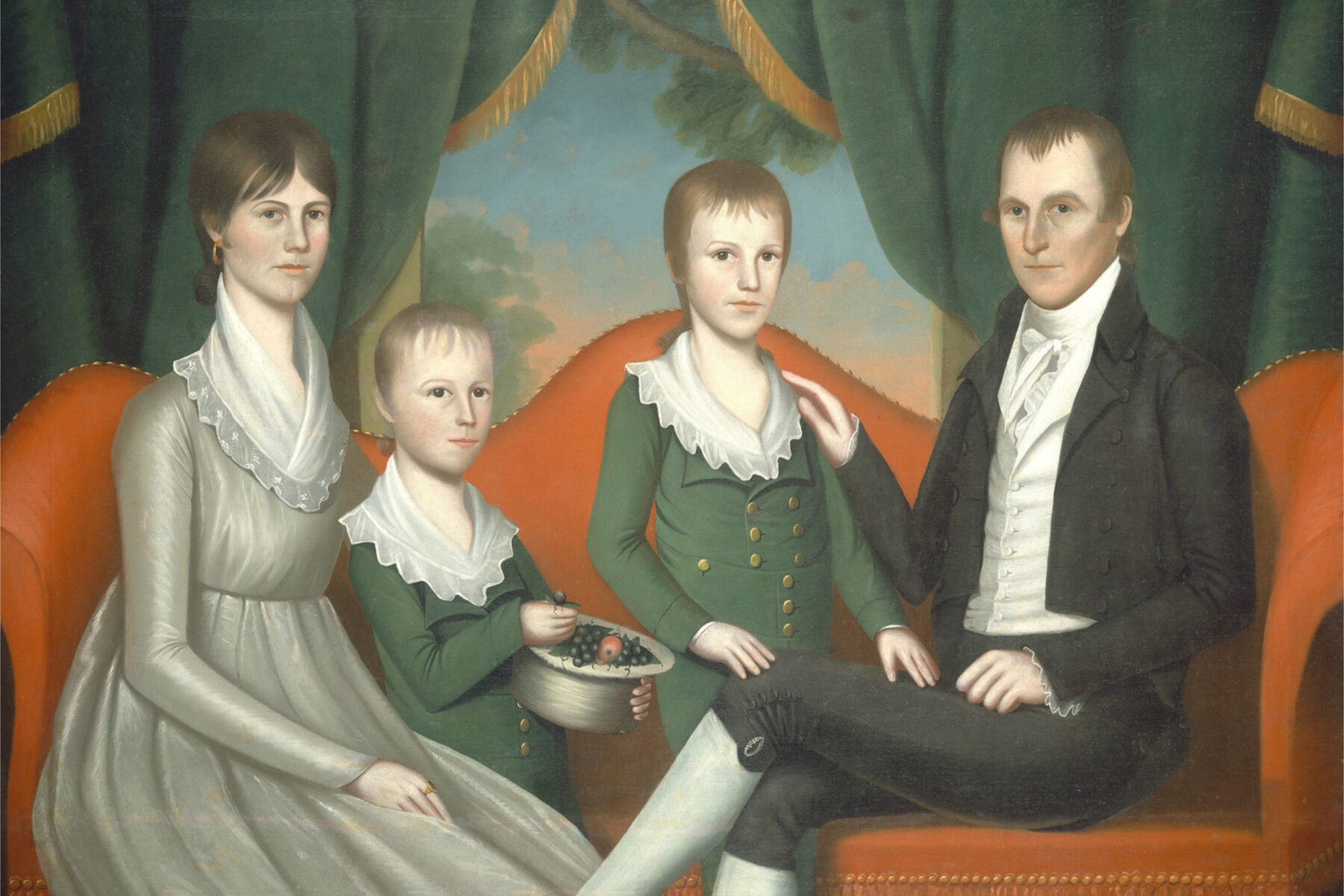The first instance of something always gets the attention, but what about the second and third? Charles Wilson Peale’s museum in Philadelphia (1782) is usually taken as the first American museum. Peale’s genius was to showcase portraits of Revolutionary War figures, mastodon bones, and other natural history wonders under one roof. Peale’s methods got attention, and one of the people he inspired was the painter Ralph E. W. Earl (1788–1838). Taking the American Enlightenment to the frontier, Earl opened a similar museum in Nashville in 1818.
Art historian Rachel Stephens explores the relatively unknown Earl and his museum, which combined fine art and what Earl called “natural and artificial curiosities.”
“Earl became not only the first professional artist in the region, but also one of the very few people to perform scientific inquiry west of the Appalachians,” writes Stephens. “Earl was a multifaceted adventurer, and his committed interests ranged from politics and literature to Native American history and geology.”
Like Peale, Earl was an artist, naturalist, archeologist, collector, museum entrepreneur, librarian, et cetera. Combining so many interests and occupations “seem nearly implausible today,” notes Stephens, but was par for the course for the early US’s go-getter artist/scientists, who had a profound faith in the progress of knowledge and the show-business gumption to get it out there.
Earl learned painting from his father before studying in London and Paris, where he painted Napoleon Bonaparte. After Napoleon, who could be the next subject for Earl’s oils? He moved to Tennessee in 1817 to paint Andrew Jackson, who was then riding high as the “Hero of New Orleans.” Still more than a decade away from the White House, Jackson found an acolyte in Earl. Earl would be associated with the Jackson circle for the rest of his life; he essentially became Jackson’s personal artist, married Jackson’s niece, and lived at times in the White House and the Hermitage, Jackson’s near-Nashville estate.
Earl painted portraits of Jackson, Jackson’s friends, and even some of Jackson’s enemies (Jackson being an epic hater). Long before Elvis, Earl designed a guitar-shaped flowerbed at the Hermitage. Stephens has written a book detailing how instrumental Earl was in, as her title puts it, Selling Andrew Jackson to America through portraiture.
“Backing Jackson meant promoting the state of Tennessee,” writes Stephens, and in Earl’s mind, that meant “improving” the place. He opened the Tennessee Museum (later called the Nashville Museum) and helped found the Tennessee Antiquarian Society (1820).
Earl shared Peale’s belief that their institutions would “edify the public and improve educational opportunities within their respective cities.” Both museums were open to all, but also inevitably functioned as cultivators of “public taste and cultural sophistication.” Class and cultural distinctions were still quite fluid—the backwoods brawler Andrew Jackson was a prime example of that—and less privileged Americans certainly visited Earl’s museum, which charged no admission in its first few years, though the very poor and the enslaved probably did not.
The Nashville Museum collected whatever “was rare, curious, or useful.” This included “stones, soil samples, minerals, models of labor-saving machines,” and portraits of Nashville’s major public figures, painted by Earl himself. The arrival from France of Earl’s earlier portrait of Napoleon was big local news.
“By today’s standards, Earl’s collection seems rather varied and strange,” Stephens notes, “but such diversity was typical of the period’s interests and evidence of Earl’s efforts at bringing together anything that might enlighten Tennesseans about their past and the region’s natural history.”
Weekly Newsletter
Earl was particularly interested in Native American artifacts. He seems to have been the first white person to excavate some of the state’s “Indian mounds” with a preservationist mindset, as opposed to a profiteering one.
“Earl’s interest in preserving the state’s Native American history is intriguing,” writes Stephens, “given his close relationship with Andrew Jackson and the latter’s notoriety concerning Indian affairs.”
Earl left the museum business in 1825 to devote himself fully to being Jackson’s portraitist. The museum continued, run by a Dr. de St. Leger and then a Dr. Gerard Troost (who was the first person in the US to earn a living as a geologist), but the collection was ultimately broken up, the fate of much of it remaining a mystery.







